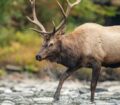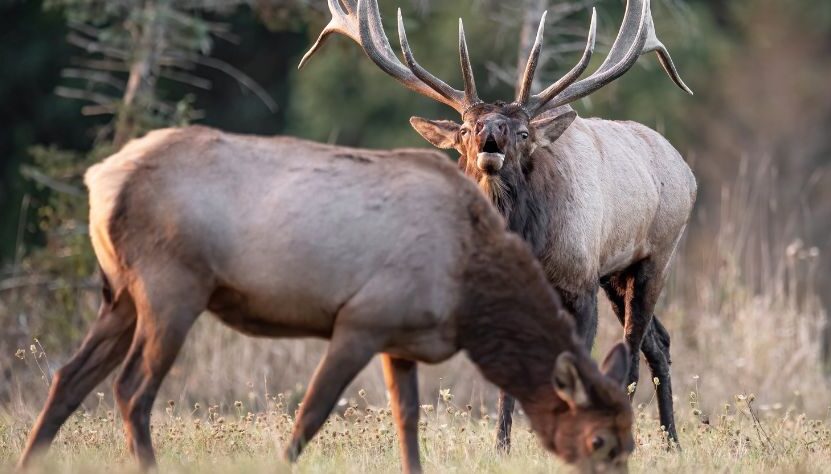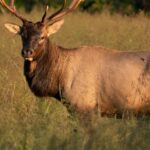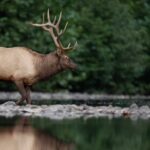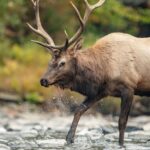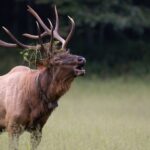Editor’s Note: Longtime, award-winning outdoor writer J. Wayne Fears of New Market, Alabama, has taken 12 bull elk. He’s a nationally known gun writer who has written for most of the gun magazines in the past and present.
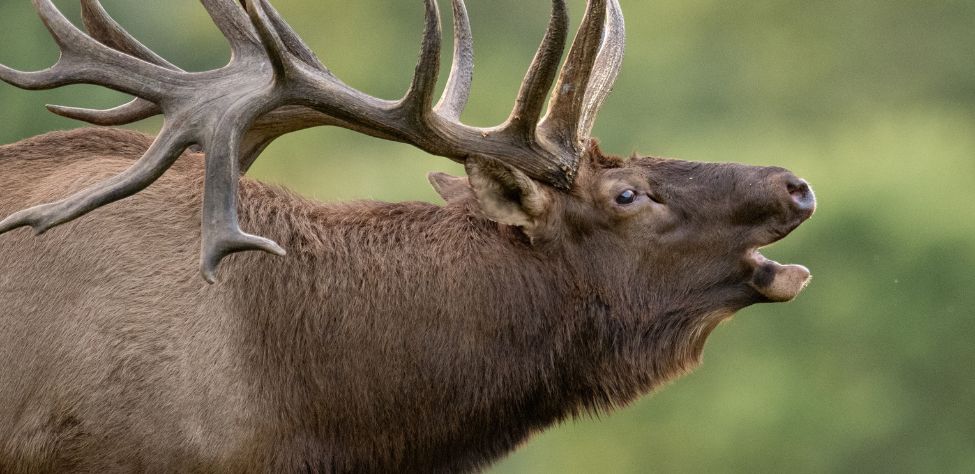
I hunted in Colorado with a Savage Arms rifle in the early 1990s. I’d gone to the Savage Arms Company before the hunt and built the rifle that I used on the hunt. At the time, I went to the back door of the Savage Arms Company and looked out at where the steel they made their guns out of was stored and the plastic they made their stocks out of, and I stayed with this gun from picking out the steel and the plastic for the stock, until the rifle was made. I took that rifle to the range, shot it, and then had the serial number stamped. I was using the All Weather Gun because it was made of stainless steel and featured the plastic stock.
After I watched my gun being built, I went out with the Savage Arms Company people to Colorado for an elk hunt. I was shooting a Winchester 160 Grain Bullet. We were hunting with an outfitter, a family operation near Steamboat Springs, Colorado. They had leased a tremendous amount of land. The daddy of the operation was in the University of Colorado’s plant materials department. He knew what to plant, when, and the best crops to lure in elk and mule deer. His two sons worked for a coal mining company while not guiding elk hunters.
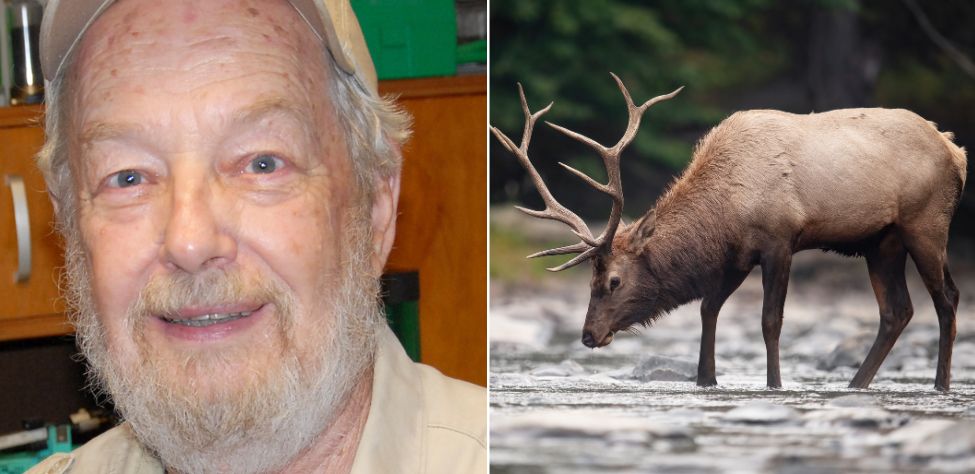
In the mornings, we would hike up to the high country and do a lot of walking. Our guide would bugle to bulls he heard bugling. Finally, we heard a bull bugling with a herd of cows in a creek bottom. I was using Swarovski Optik 10×40 binoculars and a 3-9×40 rifle scope. I had sighted my rifle two inches high at 100 yards so that I wouldn’t have to think about making any corrections with my scope out to about 400 yards to shoot accurately. Since I went through the process of building this rifle, I spent a lot of time on the rifle range, learning what type of pattern the bullets and the rifle could produce from 100 yards. I wanted to be able to hold dead- on the spot that I wanted to hit from 100-400 yards without adjusting my rifle scope.
I strongly recommend this tip to anyone going on an elk hunt: Know your rifle well enough to feel like a part of your body when you put it on your shoulder. This way, you’ll know exactly where the bullet will hit at the yardage you must shoot.
Looking for more content? Check out our YouTube channel and watch “Why Hunt in the Rain” by John E. Phillips.
Expert Guidebooks on Elk Hunting: Best Sellers

Secrets for Hunting Elk
The quickest, easiest (if there is an easy way), and safest way to find and take that bull elk of a lifetime will be to hunt with a guide.
Chad Schearer, a longtime Montana guide and TV personality, told me, “My hunter is my gun. If I get to the elk, and my hunter isn’t with me, then we don’t take the elk. My job is not only to find the elk but also to help the hunter get to the elk and make the experience as enjoyable as I can for him.” That’s the kind of fella with whom I want to go elk hunting.
An elk hunt can be tough, but it doesn’t have to be so tough that you don’t enjoy it. That’s why this elk hunting book starts with the confessions of an elk guide and with Chad Schearer’s philosophy of what the guide and the hunter’s relationship should be.
A good portion of your success will depend on your physical condition, and Matt Morrett of Harrisburg, Pennsylvania explains how an eastern hunter can get ready physically during June and July to hunt western elk, the animals he describes as, “Like deer or turkeys on steroids.”
Wayne Carlton, well-known elk hunter and TV and video personality from Montrose, Colorado, tells us what types of elk calls to use and what to say to the elk. Mike Miller of Colorado, another elk guide and Mossy Oak video personality, has tactics for the best equipment for bowhunting and gun hunting elk.
You’ll learn helpful strategies and hunting tips in this book, as well as some straightforward hunting methods that will help to make your elk hunt more successful.
“Thanks to the advice in your elk hunting books, I was able to call up a nice 6-point (6X6) bull elk! He was bugling like crazy. I called him in from about a ¼ mile away. Called him into bow range (about 40 yards away). It was a thrill!” ~Rob Brannon
VERSIONS: AUDIBLE & KINDLE

Elk: Keys to 25 Hunters’ Success
Often just one tip or tactic makes the difference in whether you take an elk home to dinner or have to hike back to the truck by yourself. In John E. Phillips’ latest elk book, Elk: Keys to 25 Hunters’ Success, you’ll learn from successful elk hunters the strategies they use to find and take elk.
Many know that the technique that seems to work most often is to hunt where other elk hunters don’t and understand where the elk are before you go on a hunt by studying data from each state, visiting HuntData (see chapter 1), examining maps, and reading postings on elk forums.
This book also tells you how to get ready physically for an elk hunt, including participating in Train to Hunt Competitions, what gear you need to take, how to enjoy a successful do-it-yourself elk hunt, or how to pick the best elk guide for you. You’ll also hear about the X System and the Broken Y System of hunting elk.
Although no one person has all the answers on how to help you find and take your elk, I’m convinced that this book’s outdoors men and women will teach you how to have satisfying elk hunts.
As my friend Karl Badger once told me, “Elk hunting doesn’t get any better than when I ride horses into the high backcountry, see two grizzly bears, hear a pack of wolves howl close to camp all night long, eat plenty of delicious food prepared on a fire and enjoy the company of good friends.”
VERSIONS: AUDIBLE, KINDLE & PRINT

How to Find Your Elk and Get Him in Close will teach you the tactics of 10 nationally known elk hunters, to help put that giant bull that’s been screaming at you from afar, in your lap. You’ll learn what some of the best guides, outfitters, and successful elk hunters do to find elk and get them in really close.
Also in this audiobook, you’ll notice that the majority of the experts call elk to within bow range. We selected numerous bowhunters and bowhunting guides, since the bowhunter has to get much closer to a bull than the gun hunter does – often less than 20 or 30 yards – practically in your lap.
On one elk hunt, I’d heard this bull bugle all morning. My guide had called him within 30 yards, and he was standing just inside black timber. I saw the smoke from his nose wafting out into the icy air less than 30-yards away. All the bull had to do was step out, and I could take the shot with my bow. But then, through no fault of my guide or me, the bull vanished.
The only conclusion I could come up with to understand why the bull I wanted to take with my bow hadn’t stepped out and given me a shot, was because he got raptured. He evidently had left the earth with no trace of himself.
This hunt was when I started wanting to learn more about hunting elk up close. In this book, I’ve tried to find some of the most knowledgeable, experienced, and practical elk hunters. I’ve always found that the best way to learn any outdoor skill, is to either hunt or fish with the best sportsmen in that field.
Often, in elk hunting, that means elk guides, who generally hunt every day of the season and receive a salary for every hunter they guide. So, I’ve put together a group of some of the best elk hunters I know to help us all learn how to find bull elk and get them in close.
VERSIONS: AUDIBLE, KINDLE & PRINT
Tomorrow: Know the Importance of Shooting Sticks


